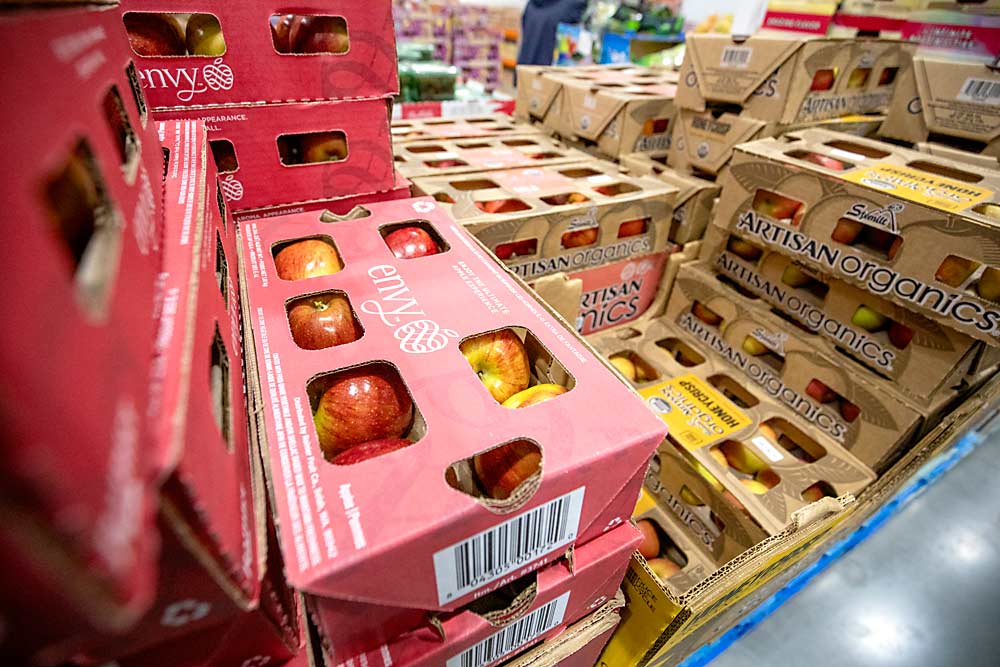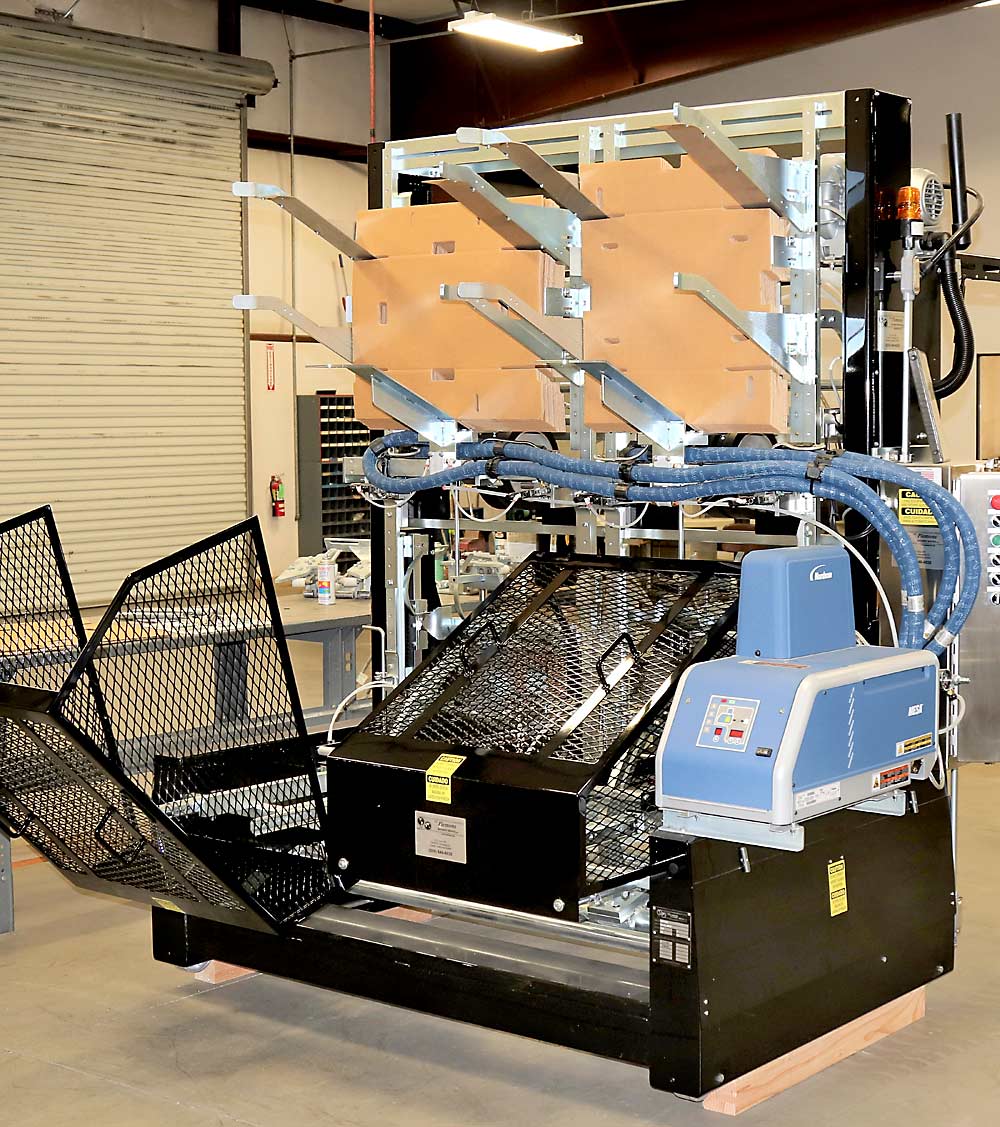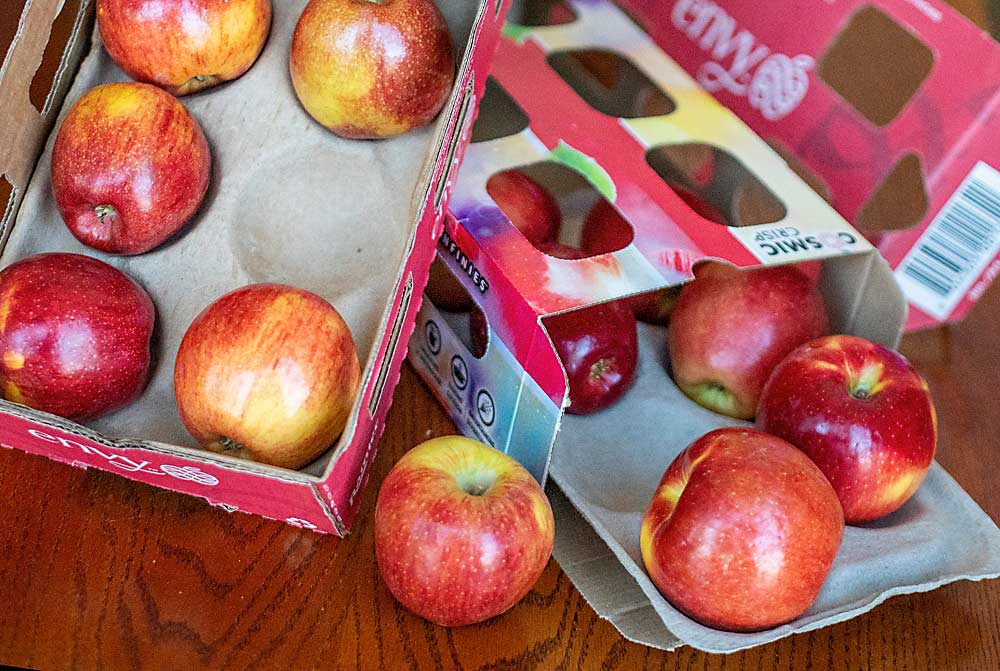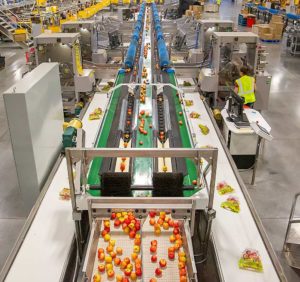
The shift to sustainable consumer packaging has hit the fruit industry, and several packing companies say they are using more cardboard.
Costco is driving much of the change, replacing its plastic clamshell packs last fall with 4-pound corrugated boxes. Others are experimenting with biodegradable pouch bags.
The switch means more capital investment in the packing lines.
“To develop the packaging equipment for those plastic trays was no small investment,” said Steve Lutz of Category Partners, a market analysis company that tracks consumer preferences in the produce industry. “Now you’ve got to regroup and do it all again.”
Changes are coming to cherry packaging, too, said Bill Plemons, president and CEO of W.E. Plemons Machinery Services in Parlier, California. The machine company builds automated box-makers for a variety of industries, including tree fruit. The company built the machines that make the Costco packs, which then fit nine each into a master shipping box.
Plemons has sold about 20 double apple-box machines to fruit packers in the Northwest and a few more to producers on the East Coast.
They also have a machine that does the same for 18-pound and 20-pound cherry boxes.

Costco is just trying to meet consumer demand, Lutz said. The company has been attuned to the environmental requests of their customers for years. The company keeps sustainability report cards for their suppliers and uses the information as part of their sourcing decisions.
“Costco doesn’t just talk a good game,” Lutz said.
The retailer announced the change in October in a Facebook post that elicited comments of appreciation. One common drawback, commenters said, was not being able to reuse the clamshell packs as paint holders for children.
The enthusiasm lines up with customer surveys.
About 29 percent of shoppers surveyed by The Packer in 2021 said they often based produce decisions on packaging material, while almost half said they sometimes do, the industry newsletter reported in November. More than half listed eco-friendly packaging as their signal for calling a product sustainable, ahead of “pesticide free” and “organic.”

Any packing line transition has a cost, but Costco allowed time to adjust, said West Mathison, president of Stemilt Growers of Wenatchee, Washington. The store traded ideas with packers for the past three years before the switch.
“The transition away from the clamshell was well communicated, and numerous pilots occurred with shared results,” he said.
Stemilt adjusted their tray-fill lines to accommodate the new packages. That transition was easier and cheaper than retrofitting from poly bags to pouch, Mathison said.
For Honeybear Growers in Brewster, Washington, the cost of the new cardboard pack ended up about the same as the clamshells, which are about $3 more for each 40-pound box equivalent of the old tray pack boxes, said Jim Divis, general manager of Honeybear Growers. But the new packages take more labor. The packer used to simply let apples roll into the clamshells, and an employee would then fine-tune the positioning of each one. For the new package, a person must individually place each piece of fruit into the tray.
But customers are asking for such changes, Divis acknowledged.
“It’s on us as production people to figure it out as best we can,” he said.
Cherries are harder, said Rochelle Bohm, brand manager for CMI Orchards in Wenatchee.
The company has worked with stores to experiment with cardboard packaging, but cherries are so fresh, so seasonal, so impulse-driven, that customers want to see the fruit to buy it, Bohm said. Cardboard is not see-through like plastic.
Instead, the company has slowly rolled out a top-seal package — still plastic — that uses about 30 percent less plastic than the traditional clamshell, Bohm said. Other packers are making similar moves, so the consumer pack will gain ground over time, she said.
“For cherries, visibility trumps sustainability,” she said.
—by Ross Courtney







Leave A Comment